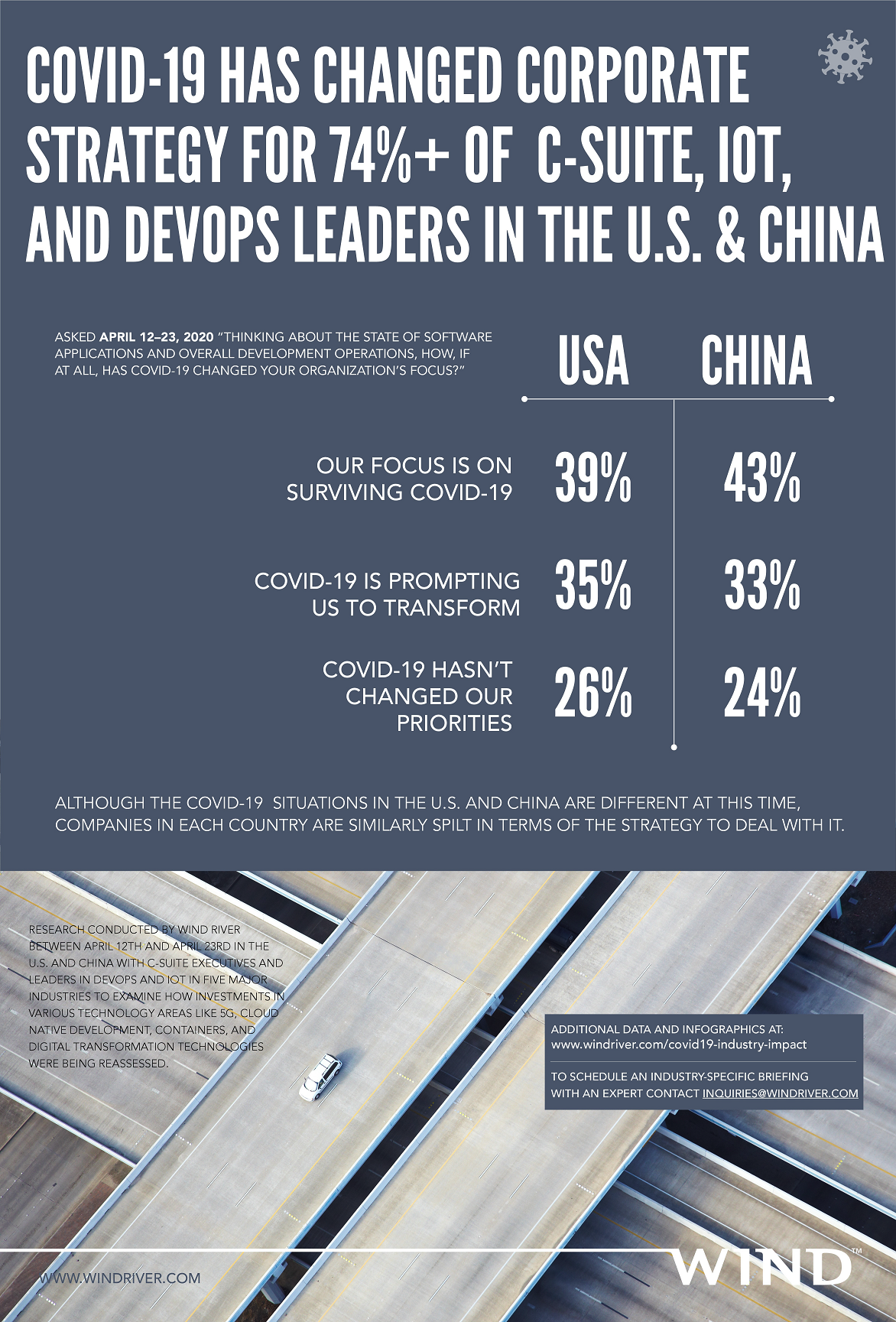Seismic events can disrupt our focus and thinking and force reassessment of drivers of future business success. The current COVID-19 pandemic is one of those major events producing a worldwide impact, especially given its reverberations on the two largest global economies, the US and China, according to COVID-19 and Corporate Strategies in the US and China: A Seismic Event Demanding Change and Action from Top Executives, a new report commissioned by Wind River.
"Prior to the pandemic, the vast majority of corporations were looking toward advancing their digital transformation. However, we've entered a different landscape that is triggering leaders in DevOps and IoT development to make profound decisions about the speed and nature of their technology investments," said Kevin Dallas, President and CEO, Wind River. "As we've seen from our study, in this COVID-19–shocked world, those most optimistic about the future of their business and the direction of their technology and development investments are the enterprises viewing this as a time to accelerate and even change the nature of that transformation."
With COVID-19–related challenges creating new pressures, enterprises are rapidly falling into the categories of simply surviving, pivoting to adapt to new realities, or doing nothing. While the US and China are in different phases of the pandemic, in several aspects the responses from each country split in similar ways. More than 1 in 3 executives — 39% of US and 43% of Chinese leaders — are focusing on surviving this crisis, while 35% in the US and 33% in China are spurred to make a transformation due to COVID-19.
The enterprises focused on transforming have a much higher propensity to accelerate key technology investments compared to those who are merely surviving. Those with a desire to digitally transform are placing 50%+ extra focus on key investment areas such as 5G, containers, and cloud native. The research findings among these leaders indicate that they understand the core technology components that will be vital for digital transformation.
For these enterprises, executives are increasing spend in the following areas:
■ 5G projects: by 63% in China, 37% in the US
■ Cloud-based application development: by 62% in China, 35% in the US
■ AI: by 61% in China, 37% in US
■ Container-based development: by 56% in China, 38% in US
■ IoT: by 60% in China, 33% in US
■ Applications at the edge: by 57% in China, 25% in US
As enterprises have had to implement changes to their business processes due to the pandemic, 98% in China and 90% in the US note that their ability to meet customer demands has been impacted.
Given recent needs, the interest in growing DevOps practices has risen across enterprises, with executives now placing more importance on DevOps (46% in US, 36% in China).
Regardless of region, most enterprises realize that the road ahead will be tough — 50% of enterprises in the US and 77% in China are seeing heavier workloads across their teams.
They also anticipate the need to implement major initiatives such as accelerating new business models (83% in US, 89% in China) and building in more agile development (82% in US, 86% in China).
To tackle these challenges, there is a clear recognition among leaders that they will require transformative focus and skills. Therefore, in order to successfully lead a digital transformation, C-suite leaders and executives in DevOps/DevSecOps and IoT anticipate increased importance in their roles (ranging from 60%+ in the US to 73%+ in China) as their businesses exit COVID-19.
As the world grapples with the disruption caused by COVID-19 and enterprises begin to understand major gaps and the resources required to deliver on customer needs, they must identify the right strategies and experts to help them accelerate a digital transformation and realize long-term success beyond the pandemic.

